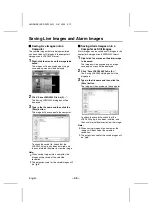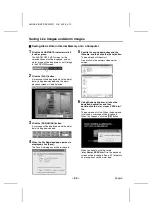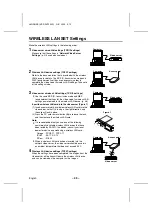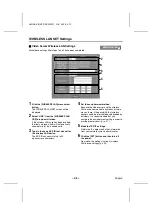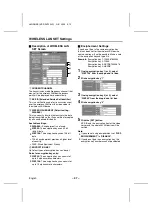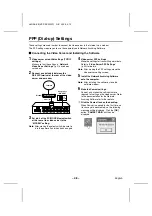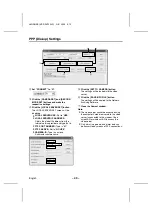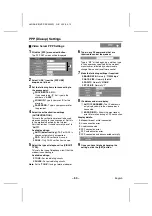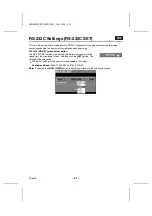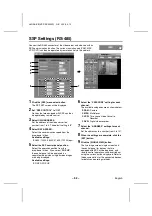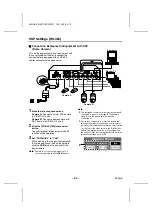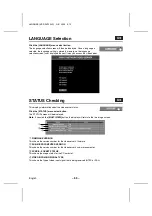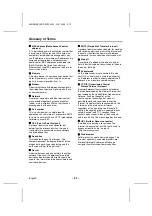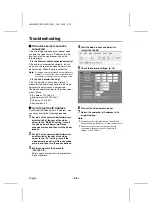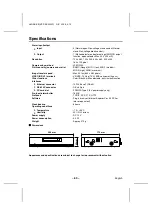
Glossary of Terms
MAC address (Media Access Control
address)
A 12-digit hexadecimal identification number that
is assigned to LAN cards and LAN boards in a
computer. Complex device arrangements may
use IP addresses, but whereas IP addresses are
assigned as required by a network system
administrator, MAC addresses are burned into
the LAN card at the time of manufacture.
Ethernet uses the MAC address as the basis for
transmission of data.
Memory
A memory device is a semiconductor device that
stores digital data in units of single bits (binary
digits) that consist of either 0s or 1s.
Modem
A device that converts between analog signals
(from telephone lines) and digital signals (such
as from computers).
Network
A variety of computers and other devices that
are connected together by means of cables
(wired) or via a wireless LAN so that they can
exchange data with each other.
Port number
This is a number that is used to identify
applications on the Internet. For example, SMTP
for e-mail is normally 25 and HTTP (web-related
software) is usually 80.
PPP (Point to Point Protocol)
A protocol (communication standard) that
determines the process by which two points
(computers) are connected across a network
using telephone lines.
Resolution
This indicates the quality of images. The
numbers represent the degree of detail for the
images during printing or displaying, and the
units used are “dpi” (dots per inch).
Router
A device that connects one network to another
network. It looks up IP addresses for network
devices and determines what route should be
used for the information to be transmitted to and
from these devices.
SMTP (Simple Mail Transfer Protocol)
A protocol (communication standard) for sending
and receiving electronic mail via the Internet and
Intranets. It controls the flow of mail between
servers and is also used when clients send mail.
Stop bit
A symbol that is added at the end of a byte of
data (8 bits) during data transmission to indicate
the end of that byte.
Subnet mask
An IP address consists of a network ID and a
host ID. A subnet mask is used to mask part of
an IP address in order to specify whether the IP
address is on a local or a remote network.
TCP/IP (Transmission Control
Protocol/Internet Protocol)
A network protocol (communication standard)
that was developed by the Network Project that
was funded by the United States Department of
Defense. It can be thought of as the
communication technology that makes it
possible to send and receive data over the
Internet. Computers that are connected via the
Internet use this protocol, and it works
regardless of the type of device. Basically IP
controls the sending of data in separate blocks
called “packets”, and TCP receives these
packets, opens them to look at their contents,
and then puts all of them back together into one.
URL (Uniform Resource Locator)
A method of specifying a resource on the
Internet. An example of an URL that is used to
access a website on the Internet is
“http://www.sanyo.com/”.
Web browser
Software that is used to view web pages. The
two most commonly-used web browsers are
Microsoft Internet Explorer and Netscape
navigator from Netscape Communications.
L8NAA/XE
(VSP-SV2000P) GB 2003,
5,
12
English
– 57 –

